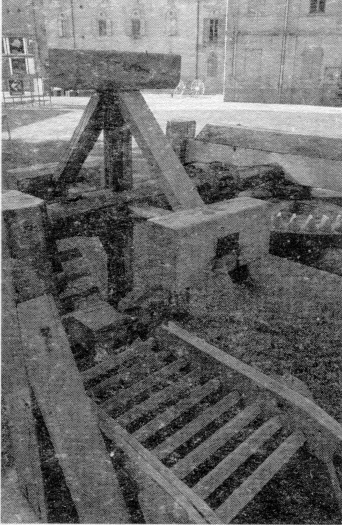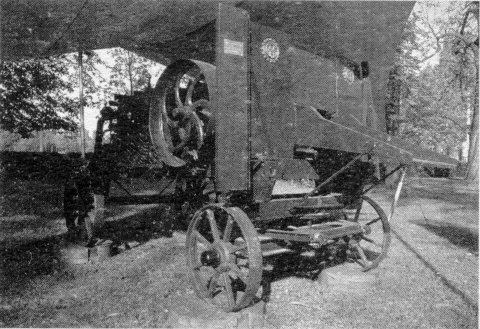
41
Italian Hemp Museum
On the 31st of last October, Dr. Nikolai Lemeshev, Dr. Alexandra Doubovskaja, Robert C. Clarke. and David Watson visited Bari, Italy to survey progress with the VIR-IHA Cannabis Germplasm Preservation project at the ENEA nuclear facility. The Italian government limited work to this highly secure facility to avoid theft or diversion of the drug varieties grown there.

Figure 1. Oxen-powered decorticator
(Photo R. C. Clarke)
After our visit, we traveled to Bologna, previously a center of the Italian hemp cultivation industry, in order to visit the Museo Della Civilta Contadina. Once there, we were accompanied by the museum director, Mr. Francisco Fabbri and his daughter Francesca, who kindly provided translation. The museum is located 30 minutes drive from the airport and is established upon about 4 hectares of land in a beautifully restored 17th century villa and surrounding buildings. The museum has 4 sections; Ciclo del grano (Cycle of grain), Ciclo della canapa (Cycle of hemp), Casa colonica (Colonial farm house), and Mostre temporanee (Temporary exhibitions) covering various aspects of Italian farm life. IHA members will find the display of traditional canapa agriculture especially interesting. Most of the displays show both artifacts and old photos of their actual use. Outdoors, in the front drive, is an oxen-powered brake decorticator, last used around 1905. They also have a steam engine of English make, built in 1884 and used to power the accompanying "next generation" mechanical decorticators and brakes. Upon entering the Canapa Building, the first exhibit is a reproduction of a 15th century Italian fresco of canapa harvesting and retting. The original fresco is still on the wall of a nearby villa!

Figure 1. Steam-powered decorticator
(Photo R. C. Clarke)
An exhibit of dried hemp
stalks 3+ meters tall reveal the exceptional fineness and quality of the Italian
varieties. Next, a typical Italian plow, specifically adapted for the deep tillage
required for hemp fields. A 12-row seeder pulled by human power, specifically made
to plant hemp at narrow row widths is also on exihibit. Adjacent old photos show the
seeder in action. Next displayed are examples of hemp rakes for leveling the soil
after seed planting. Typical canapa scythes are on exhibit, as well as an adapted
US-made Auburn wheat harvester used from 1900-1935 to harvest hemp. Nearby is an
extensive display of antique photos (50 - 150 years old) documenting harvest, stacking,
bundling, the preparations required for immersion retting (rocks on top of bundles soaking
in ponds) and then drying, as well as the hand breaking, decorticating, scutching and
spinning processes. Both hand and mechanical weaving is then reviewed with exhibits
of both looms and photos. Also interesting is a collection of small working models
of hemp equipment in the administrative office.
Canapa postcards (a set of 16) available in the
main visitor's building make a nice collectors item. Several books which discuss
traditional Italian hemp and the museum are also available.
Last, but certainly not least, the museum has
Italian government permission to grow small amounts of hemp for demonstration purposes.
A French variety has been grown for the last 5 years, but unfortunately, recent
thefts of these low-THC plants might force the museum to curtail these activities.
The museum plans to join the 1995 VIR/IHA CGPP Project by cultivating one of the
endangered Italian varieties, possibly a different variety each year.
If you find yourself in the Bologna region of
northern Italy, all of us at the IHA recommend a visit to the Museo Della Civilta
Contadina as extremely worthwhile!
D. Watson
Museo Civilta Contadina
Via S. Marina 35
40010 S. Marino di Bentivoglio
Bologna Italy
Tel +39 51 891050
Fax +39 51 898377